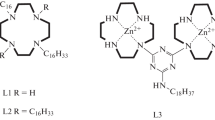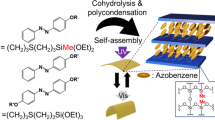Abstract
This is a copy of the slides presented at the meeting but not formally written up for the volume.
Complex structures, such as living organisms or highly structured materials, share in common the fact that their inherent complexity may be accounted for by the tangled organization of a vast number of simple units. The complex behaviour arises not necessarily due to the atomic structure of the system, but to the orderly assembly of all, or part, of its constituents. Self-assembly of synthetic soft-matter components (polymers, liquid crystals, surfactants, colloids and organic/inorganic hybrids) results in regular hierarchically-organized structures. Here, we report on a photoluminescent highly-organized bilayer alkylene/siloxane hybrid self-assembled by intermolecular hydrogen bonding between amide groups, van der Waals interactions between the alkylene chains and an entropic term related to the organic-inorganic phase separation [1]. These factors are decisive for the emergence of a thermally-actuated photoluminescence memory effect induced by a reversible order-disorder phase transition of the alkylene chains involving ~30 lamellae (~150 nm). The reversibility of this phase transition is attained through a heating/cooling cycle (20-120 C) from which a hysteretic behaviour of the emission energy emerges. The initial emission energy value is recovered after ~300 h, following a logarithmic time dependence, due to the slow kinetics of the restoration of the hydrogen-bonded amide-amide network. The photoluminescence is thus responsive to the annihilation/formation of the amide-amide array displaying nanoscopic sensitivity, contrarily to the customary case for which the local environment around the emitter probe determines the emission features. Moreover, the emission energy logarithmic time dependence reflects hierarchically constrained dynamics deprived of any characteristic microscopic time, meaning that the emission is governed by interactions at larger length scales.[1]LD Carlos, V de Zea Bermudez, VS Amaral, SC Nunes, NJO Silva, RA Sá Ferreira, J Rocha, CV Santilli, D Ostrovskii, Adv. Mater., accepted
Similar content being viewed by others
Author information
Authors and Affiliations
Corresponding author
Rights and permissions
About this article
Cite this article
Carlos, L.D., Amaral, V.S., Silva, N.J. et al. Nanoscopic photoluminescence memory as a fingerprint of complexity in self-assembled alkylene/siloxane hybrids. MRS Online Proceedings Library 1015, 208 (2007). https://doi.org/10.1557/PROC-1015-BB02-08
Published:
DOI: https://doi.org/10.1557/PROC-1015-BB02-08




